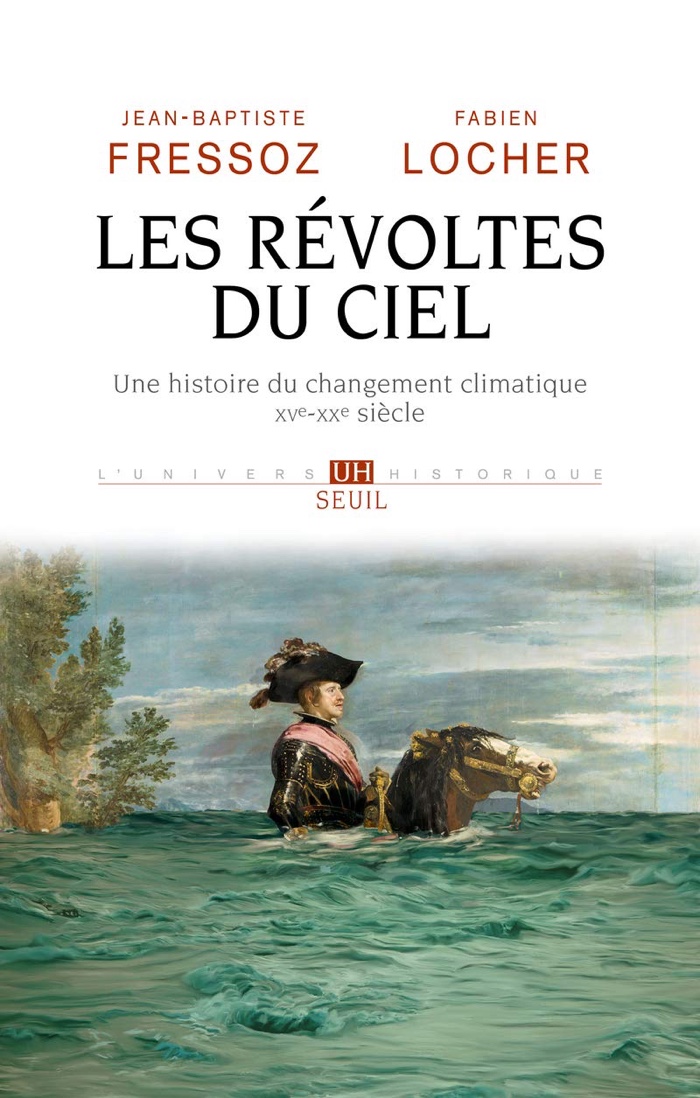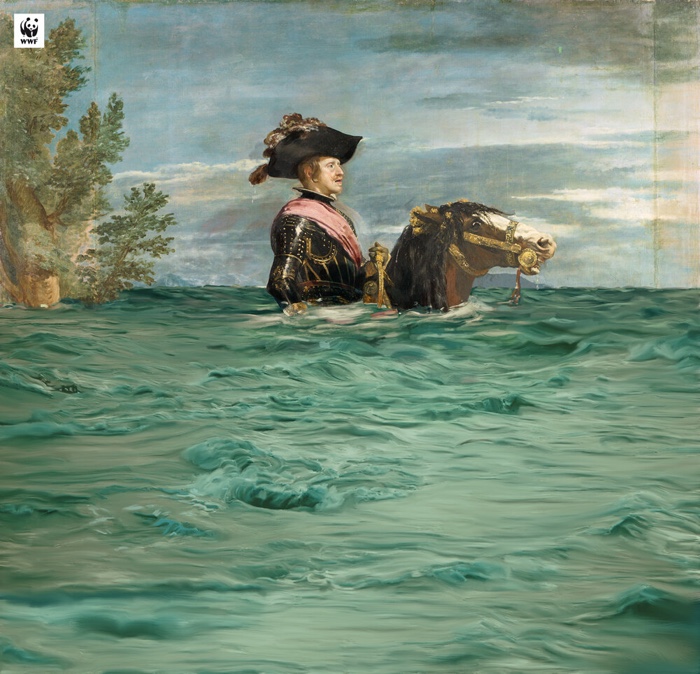Warning: the book I’m about to review is in French and yes, I misled you when i gave an english title to this post. Apologies for that but I found the research of its authors so interesting, I wanted to share some of it with you.

In 1494, during his second trip to the Americas, Christopher Columbus is shocked by the storms he witnesses off the coasts of Jamaica. He believes however that the violent rains can be tamed by massive deforestations. Not only would the climate be less humid but the island could be turned into another hotspot of sugar production. After all, the scheme had worked 50 years ago when the Spanish and the Portuguese colonised Madeira and the Canary Islands: they put the forests in the virgin islands on fire and replaced the vegetation with sugarcane.
We tend to think that the anthropic dimension of climate change is a very modern debate. In Les révoltes du ciel. Une histoire du changement climatique XVe-XXe siècle, Jean-Baptiste Fressoz and Fabien Locher demonstrate that explorers, geologists, statesmen, historians, physicists, biologists and philosophers have been talking about climate change and geoengineering long before the two fields of research even had a name. Since the 15th Century, Europeans were not only preoccupied with heavy storms, dry landscapes, unseasonably dark Summers and unexpectedly cold regions (as is to be expected in mostly agrarian economies) but sometimes they were also confident that human interventions could tame those inconveniences.
Mastering the climate was an obsession of governments, especially British, French and Spanish governments, up until the mid-19th century. The book demonstrates quite convincingly how their belief that climates could be manipulated at will was used as a compelling argument to colonise the Americas and Africa.
In the 17th Century, colonising Europeans were shocked by the icy, long Winter of what is now Canada. How could the region be located at the same latitude as France and be so damn cold? Explorer Marc Lescarbot postulated that Canadian forests were so vast and so dense that they prevented the sun from warming up the earth. The colonisers believed that indigenous populations were to blame: they had not burnt the forests, worked the land and improved its value and the climate. Therefore, they didn’t really own the land.
And when European governments set their sights on colonising the Maghreb, they accused local populations of having degraded the climate. This time, however, the eco-racist reasoning was that populations in Arabic countries didn’t like trees. Not only were they unable to influence the climate but they had even destroyed and corrupted it by not turning the desert into forests. History would later show how much harm French colonisation would do to the environment in Algeria but that’s a story for another day.
This imperialist geo-engineering emphasis on forests stemmed from a belief that planting trees or cutting them to make way for crops modified the water cycle and thus the climate.
This colonial way to inhabit the Earth had its critics. In the 18th century, horticulturist and botanist Pierre Poivre was talking about how colons were responsible for climate collapse. Later, Alexander von Humboldt would denounce colonialism and say the european colonisers are destroying cities, people and climates in the Americas. What is striking in the first few chapters of the book is the very optimistic, almost Promethean, vision of climate change that Europeans used to have.

Marta Zafra, Felipe IV a caballo, after Velázquez. Part of the “+ 1.5º C changes everything” campaign, 2019 © WWF Espagne / Musée du Prado”
The climate was also the source of deep anxieties. 18th-century naturalist, cosmologist and encyclopédiste Buffon, for example, developed the theory that the Earth was a fragment of the Sun that was slowly cooling down. At first, it was great, it enabled life to bloom on Earth but in the future, it would become too cold for life to continue. Our planet was heading towards what he calls a thermic death. He did however believe that European societies could “improve” the climate in order to push back the death of life on Earth. The book also explores the heated debates around the anthropic causes of climate change that emerged during the French Revolution. The Revolutionaries accused the monarchy of having mismanaged the forests which had led to a degradation of the climate in France. The yields were poor, people were hungry. Royalists, on the other hand, accused the Revolutionaries of having destroyed the forests and with them, the climate.
The climate concerns lost their urgency around the second half of the 19th, when trains, roads, steamboats, new agricultural methods and more generally the Industrial Revolution put a stop to famines and discomforts brought about by poor climate. Ironically, it’s also the moment when the greenhouse gases responsible for climate change would start to intensify drastically.
For Fressoz and Locher, the current climate awareness closes a parenthesis. Blinded by the wonders of technology, the Westerners of the late 19th and 20th Century forgot what their predecessors had known for centuries: nature and culture are deeply intertwined. As L’invention du colonialisme vert (The Invention of Green Colonialism) –another book written in French- shows, the West hasn’t entirely lost its colonialist drive. Today, vast areas of lands in Africa are turned into natural parks to compensate for the carbon dioxide emissions of the very rich counties. The populations who have lived there and taken care of the landscapes for generations are expropriated. Just because Westerners think they know better what “nature” should look like.
If you want to know more about the book, ID4D has an interview with Fabien Locher.
